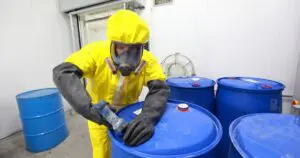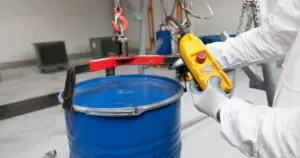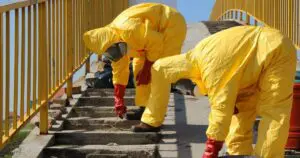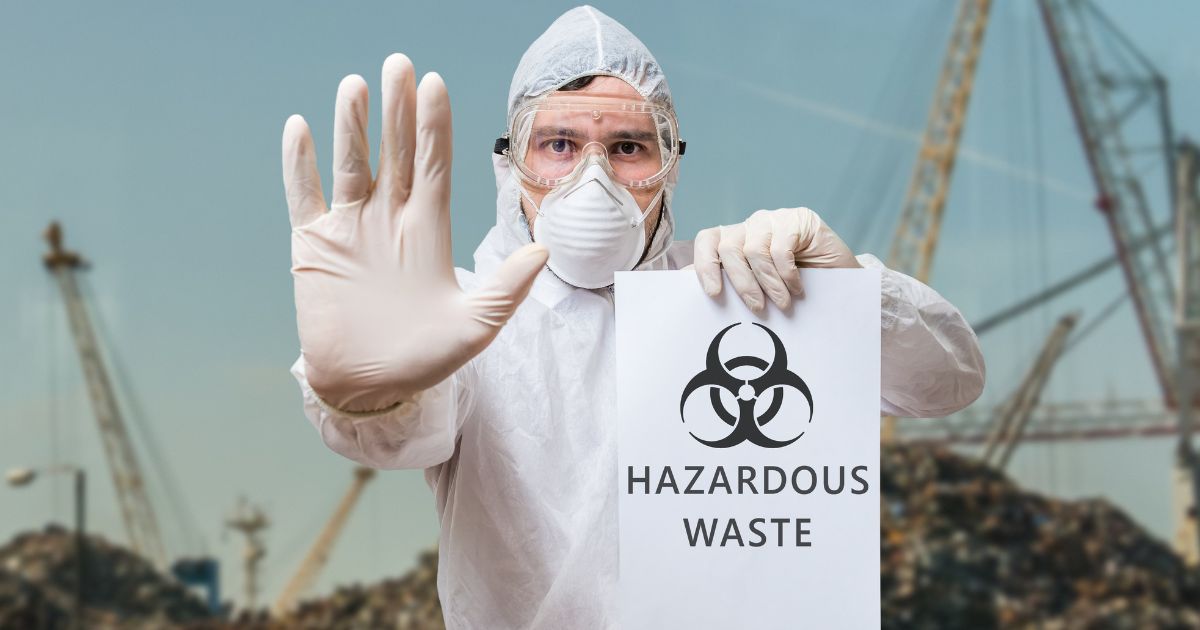Waste is something we all deal with, but not all waste is created equal. Some types of waste are harmless, while others can pose serious risks to health and the environment. Knowing the difference between hazardous or non-hazardous waste is crucial for proper disposal and ensuring we keep our surroundings safe. In this blog, we’ll break down what defines hazardous and non-hazardous waste, why it’s important to classify them correctly, and how handling them the right way makes a big difference.
What is Hazardous Waste?
When we talk about hazardous waste, we’re referring to any material that could potentially harm people or the environment. These wastes can come from various sources—factories, hospitals, homes, or even farms—and they all have one thing in common: they need to be handled with care. Hazardous waste has specific properties that make it dangerous, whether it’s toxic, flammable, corrosive, or reactive.
The Defining Characteristics of Hazardous Waste
Hazardous waste is carefully regulated because of its potential to cause harm. There are four main characteristics that can help identify it:
- Toxicity: Substances that are poisonous to humans, animals, or plants. This includes things like pesticides, certain household cleaners, or heavy metals like mercury and lead.
- Flammability: Materials that can easily catch fire, such as gasoline, paint thinners, and certain types of industrial solvents.
- Corrosivity: These are substances, often acids or bases, that can eat away at other materials. Think of powerful cleaners or industrial acids.
- Reactivity: These materials are unstable and can explode or produce dangerous gases when exposed to water, air, or other chemicals.
Because of these dangerous traits, hazardous waste requires careful handling, treatment, and disposal to prevent harm.

What is Non-Hazardous Waste?
On the other hand, non-hazardous waste is the type of waste that doesn’t pose immediate threats to health or the environment when managed properly. This type of waste is more common in everyday life and doesn’t need the strict handling procedures that hazardous waste does.
Non-hazardous waste can include:
- Household garbage (like food scraps and packaging)
- Recyclable materials (such as paper, plastic, and cardboard)
- Certain types of industrial byproducts (as long as they don’t contain hazardous substances)
- Construction debris (except for hazardous materials like asbestos)
While non-hazardous waste may not be dangerous on its own, it still needs to be managed responsibly to minimize its environmental impact.
How Hazardous and Non-Hazardous Waste Differ
The differences between hazardous or non-hazardous waste are more than just technical terms—they affect how waste is handled, disposed of, and regulated:
- Risk Level: Hazardous waste is dangerous to human health and the environment, while non-hazardous waste generally isn’t.
- Handling: Hazardous waste requires special storage, transportation, and disposal methods. Non-hazardous waste can typically go to standard landfills or recycling centers.
- Regulations: Hazardous waste is strictly regulated by agencies like the EPA, requiring businesses to follow detailed protocols. Non-hazardous waste faces fewer legal requirements.
- Environmental Impact: Improper disposal of hazardous waste can result in soil, water, or air contamination, whereas non-hazardous waste, when disposed of properly, usually has less severe environmental consequences.
How to Identify Hazardous or Non-Hazardous Waste
Whether you’re a business owner or just managing waste at home, it’s important to know how to tell if your waste is hazardous or non-hazardous. Hazardous waste often comes with warning labels. Look for symbols like a skull and crossbones (indicating toxicity) or flames (indicating flammability).

Non-hazardous waste, on the other hand, looks like everyday trash, but it’s still important to double-check. For example, electronics and batteries can contain hazardous materials and should be handled separately from regular household waste.
Why Waste Audits Matter
To properly identify waste, many companies conduct waste audits. A waste audit involves sorting through the waste generated by a business or facility to figure out what’s being thrown away. This helps in determining how much hazardous or non-hazardous waste is produced and ensures everything is handled according to regulations.
Proper Disposal of Hazardous Waste: Why It’s Critical
Disposing of hazardous or non-hazardous waste responsibly isn’t just about ticking boxes on a compliance form—it’s about keeping people and the environment safe. Improper disposal of hazardous waste can lead to long-term damage, such as soil contamination or pollution of water sources.
In the U.S., the Environmental Protection Agency (EPA) regulates the disposal of hazardous waste through the Resource Conservation and Recovery Act (RCRA). This ensures that hazardous waste is tracked from its creation to its disposal, helping to prevent any mishandling along the way.
Special Treatment for Hazardous Waste
Facilities that process hazardous waste are held to very strict standards. They use advanced techniques like chemical treatment, incineration, or stabilization to neutralize the waste before it’s safely disposed of. Non-hazardous waste, in contrast, is typically sent to landfills or recycling plants without needing such complex treatments.
Staying Compliant with Waste Regulations
Whether dealing with hazardous or non-hazardous waste, businesses must stay compliant with the relevant waste management regulations. The EPA and other environmental agencies provide clear guidelines for how to classify and dispose of various types of waste.
Failing to comply can result in hefty fines, legal trouble, or even harm to your business’s reputation. By ensuring that your waste is properly classified and managed, you’re not only protecting the environment but also securing the long-term success of your business.

Conclusion
Whether you’re managing hazardous or non-hazardous waste, understanding the differences is the first step to responsible disposal. Each type of waste has its own set of rules, risks, and methods of handling. By properly classifying and managing your waste, you’re playing a crucial role in safeguarding both public health and the environment.
At Environmental Remedies, we specialize in helping businesses and organizations handle their waste safely and responsibly. If you’re unsure whether your waste is hazardous or non-hazardous—or if you’re looking for a reliable partner to manage your waste—reach out to us today. Our expert team will provide you with the guidance and services you need to ensure full compliance and peace of mind. Let us help you navigate the complexities of waste management and protect your business and the planet.






